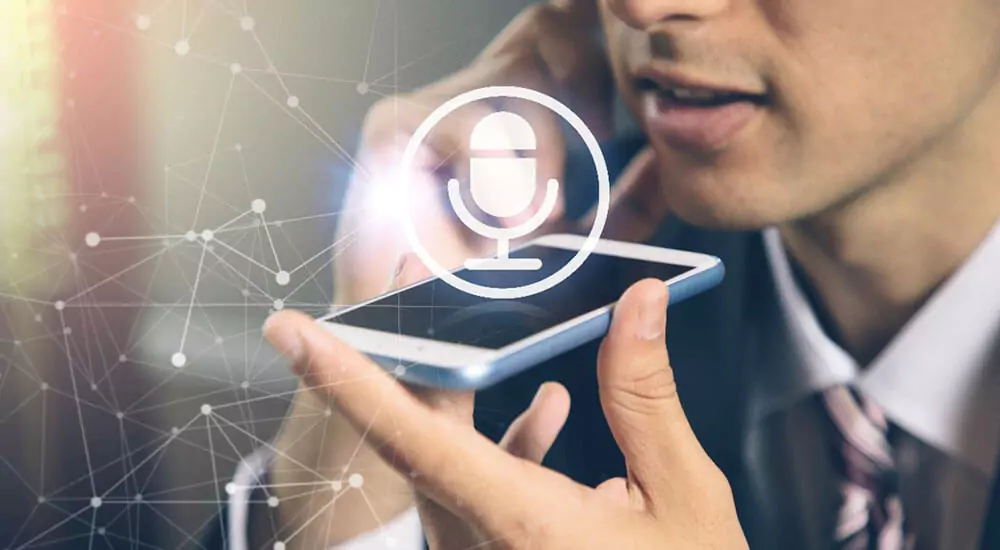
How To Choose AI Voices
by Oliver Goodwin | December 18, 2022
Reading Time: 7 minutes

As of 2022, over 3 billion AI-powered voiceover assistants are currently being used worldwide. By 2023, this figure is expected to reach 8 billion.
The motivation behind these figures is not unfamiliar. Employing AI voices in your businesses, brand advertisements, or brand creation comes with a drove of applications, such as:
- Video and voice-activated ads
- Webinars and podcasts
- Conversational chatbots. (You can read here to learn how to set up a video chatbot)
- Customer service
- eLearning
- Audiobooks conversion
- Reading books, emails, and long-form documents
- Narrating textbooks, etc.
However, it is worthy to note that in this fast-paced, technologically advanced world where every brand and business is trying to outdo the others, all applications of AI voices will not yield an equal success rate. Factors such as market size, type of business, audience type and size, language, accent, pronunciation difficulty, etc., play key roles in determining whether your business will grow with the application of AI voices.
The good news is you can control these factors to your advantage by choosing an AI voice generator with a fitting AI voice for your enterprise. This post provides a comprehensive guide on choosing the proper AI voices for your business.

6 Key Steps to Follow When Choosing Your AI Voice
Choosing the perfect AI voice is not a venture you must take hurriedly. You must take certain considerations into account and follow a straightforward procedure. The following steps serve as a guide to help you choose your AI voice from scratch.
Step One: Consider your audience.
This is the bedrock of all successful businesses. The consumers of your services, products, or creations rank above everything else in your business food chain. How do you prioritize your audience when choosing your AI voice? Ask questions about them regarding the following data:
- Age
- Location
- Gender
- Ethnicity
- Religion
- Lifestyle
- Hobbies and interests
- Nationality
Knowing these details will help you optimize your choice of AI voice. In addition, this will assist you in compartmentalizing your audience into separate categories so you do not end up associating certain actors with the wrong audience.
You would not want to, for instance, communicate with elderly people using teenage voices and slang and vice versa. Likewise, there is a certain parlance to which women, and not men, are accustomed. Transposing this diction onto a message intended for the male audience would be counterproductive.
An effective way to get this right and not rely on chance is to carry out surveys to precisely know what your audience wants and how it would react to your choice of AI voice.
Step Two: Think about your message.
AI voice optimization also depends on the content of your message. This will help you note down the kind of voice, tone, and speed best for your message.
What do you want to say to your audience? Is it instructional content? Promotional messages? Do you want to lecture them on a topic? Or just a simple customer service conversation?
Voice inflections and speaking styles are likely to affect your audience’s reception of the message you want to pass across. The AI voice you need for a customer service chatbot, for instance, would not be applicable in the case of an advertisement campaign.
The good thing is our AI voice library contains as many speaking styles as you require for any application.
Step Three: Choose the right language and locale.
This step is broken into two:
- Choosing the right language
- Using the best locale
Choosing the right language
The first two steps are building blocks to this one and will be futile if you do not get this one right.
An audience’s language is one of the most personal attributes about them that, if wielded right, will go a long way towards getting their attention and decision.
Know the language that your audience hears and speaks, then pick the language from our 66 different languages available just for you. This will encourage better pronunciation in cases of homonym occurrences.
Choosing the right locale
Beyond choosing the right language, it is important to note the region from which your audience speaks. English, for instance.m, is spoken in several nations such as Wales, Canada, Nigeria, Australia, and the US. Their accents, however, differ.
It would therefore be practical to address an American audience with an American accent and a Welsh audience with a Welsh accent.
Our voice bank comprises 254 unique speaking styles that combine multiple languages and accents to create representations for the locales to which you want to pass your message.
Step Four: Test different voices
Testing multiple voices helps you choose what works best for you. With Synthesys, there are two ways to go about it:
- By testing the voices available in our voice bank and customizing them to suit your application. You have an unlimited range of options to choose from. These options are forged from 65 different male and female actors, 254 unique speaking styles, and 66 different languages.
- By cloning your voice, so your AI voice sounds exactly like you. Sometimes, as an author, creator, or brand owner, you want to personalize your AI voice. With a 30-minute recording of your voice sent to our voice cloning machine, your voice could be ready to represent you whenever and wherever within one week of recording and submitting.
This step is particularly important, not just in the representation of the author or creator but also of the audience. Besides language, voice is another personal attribute that audiences find intimate.
You could, for instance, clone the voice of a representative of your audience and craft your content using this cloned voice as a medium.
You can do this using multiple voices until you find the one that best conveys your message to your audience.
Step Five: Create demos with these different voices.
Voice demos are similar to prototypes in design. They are the samples with which you judge how your AI voice will come out upon reaching the public or your audience.
With Synthesys, you can create your demos by following the guidelines in this comprehensive DIY we have made for you.
Upon creating your first voice, you can iterate the process with other voices of your choice and/or with your cloned voice until you have curated sufficient voices to shortlist from.
Test your content with these shortlisted voices. That way, you can streamline your options to as few as possible and then move on to the next step.
Step Six: Get feedback from your audience.
The best judge of any message is the recipient of that message. If you want to know how well people will receive a product, who better than the consumer of the product should be consulted?
The importance of this step is similar to that of the survey mentioned in Step One. There are two ways to go about this.
The first method is implemented by taking the shortlisted demos from the previous step and giving them to a select few representatives from your target audience. Note their feedback—both commendations and criticisms. Then, strengthen the commended areas and work to improve the criticized points.
Merge these representatives into a singular persona that will represent your entire audience. Finally, try to satisfy every need of this persona, and your AI voice is ready for final consumption.
In the second method, you streamline your demos to only two and split your audience into two halves. The first demo goes to the first half of your audience, and the second demo goes to the second half of your audience. Compare the reception of the two demos and see which one got the most engagement.

Different Voiceover Scenarios That You Should Know
Now that you know how to choose the perfect AI voice for your content, you must know where and how to apply it. Below are five examples of voiceover scenarios.
Audiobooks
Audiobooks are typically characterized by lifelike voices. Usually, these voices belong to actual people who exist or exist. For instance, an author reads their work aloud on record and publishes or produces it as an audio file.
Actors of public figures can also record audiobooks to enhance the sleekness or popularity of a written work. While this act may be easily done with short pieces such as a short story, a poetry chapbook, a brief anthology of essays, etc., it can get tedious with longer written pieces. It could end up erasing all seriousness or perfection in the process.
AI voices assist in putting these concerns to bed altogether. With Synthesys cloning service, for instance, the author of a novel only needs to record a 30-minute sample of their voice. The AI voice generator will produce an audiobook that is so lifelike that it would seem entirely read out by the author.
Podcasts
Podcasts are similar to radio shows that are presented through apps such as iTunes and Spotify on mobile or desktop devices. You might be wondering how AI voices come into play here. Read on to find out.
The major challenges that podcast enthusiasts encounter are:
- The costs and time required to set up studio equipment.
- Personality type. Some people, writers especially, are, therefore, reluctant to start podcasting despite expressing interest in it.
AI voices solve this without breaking a sweat. The steps are straightforward:
- Prepare your script.
- Choose your Synthesys AI voice or clone your voice(s).
- Enter your script according to how you want the conversation to go.
- Convert your script to a podcast.
- Download your audio file.
- Upload the audio file to your preferred podcast streaming platform.
This way, you save yourself costs and/or the need to be actively present for the podcasting session.
Presentations
Presentations could range from newscasts through audio drama and comics to radio commercials.
There are occasions where the absence of one actor or another in any of these events is inevitable. What, then, do you do when faced with this hurdle? AI voices.
In any corporation that coordinates or catalogs these events, the media team must prepare for such inevitabilities by having the cloned voices of key actors at the ready. Then, when unavoidable absences occur, they can rest easy knowing all they have to do is create voiceovers from the cloned voices.
Mementoes
Do you ever wish to have your favorite stories read out to you in the voice of a loved one? What if, for instance, this loved one was absent because of distance or demise? How would you navigate this wish?
A simple 30-minute voice recording sample of that person can breathe life into your wish. The steps to get this done are similar to those laid out in the podcast session above.
Chatbots
Getting a real human to answer anticipated generic customer queries and complaints is a gross tedium and a waste of resources. The responses are usually repetitive and nonstop, so why not employ a chatbot that will do all these through whatever or whomever voice to create a personalized impression on the customer’s mind?
Final Thoughts
Choosing the right AI voice is the oldest trick in the bag if you want to fully leverage the power of text-to-speech technology. And the beautiful thing about this is you do not have to worry about complexity because choosing your AI voice can be completed in a few simple steps.
Upon choosing your voice, you can then go on to apply this voice to a host of innovative applications such as podcast making, audiobook publishing, immortalising an absent loved one, audio presentations, chatbots, and whatnot.
Choosing the appropriate voice is a delicate affair you must treat with utmost care and consideration because it is audience-centric. Get it right, and experience flourish in your brand growth.




